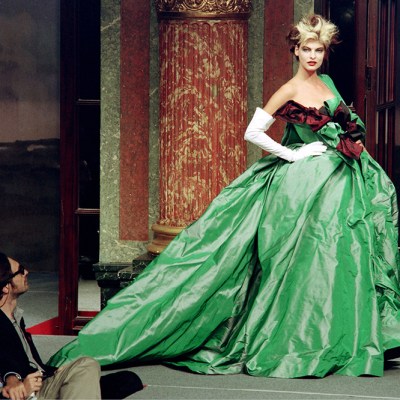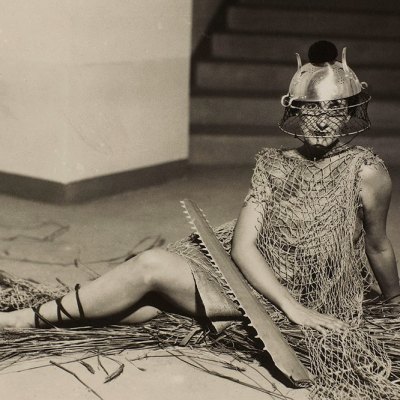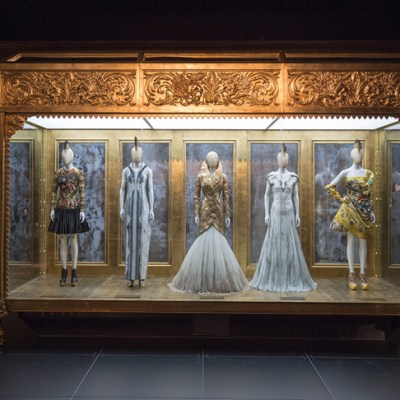From now until the end of spring, Parisians and tourists will have their fill of Yves Saint Laurent. With half a dozen simultaneous exhibitions on the fashion designer at the Centre Pompidou, Musée d’Art Moderne de la Ville, Musée Picasso, Musée Yves Saint Laurent and the Musée du Louvre, the Fondation Pierre Bergé-Yves Saint Laurent has scored a dizzying double hat-trick, a veritable six-gun salute to the bespectacled one.
Given the marathon dimensions of such an exegesis, does it really require six shows to plumb Saint Laurent’s infatuation with the fine arts? Because infatuation it was, or more accurately, a dependency. Matisse, Léger, Picasso and Mondrian were his gods. All featured in the collection he started building in the 1950s with his lover and business partner Pierre Bergé. Most fashion designers have an equanimous beg-borrow-steal relationship with art but Saint Laurent was in thrall to it. He was never able to part even temporarily with his Goya, for instance, cancelling a promised loan of the Portrait of Don Luis María de Cistué to the Prado at the last second.
Veste hommage à Pablo Picasso (1979), Yves Saint Laurent. Musée Yves Saint Laurent Paris. Photo: Nicolas Mathéus; © Yves Saint Laurent
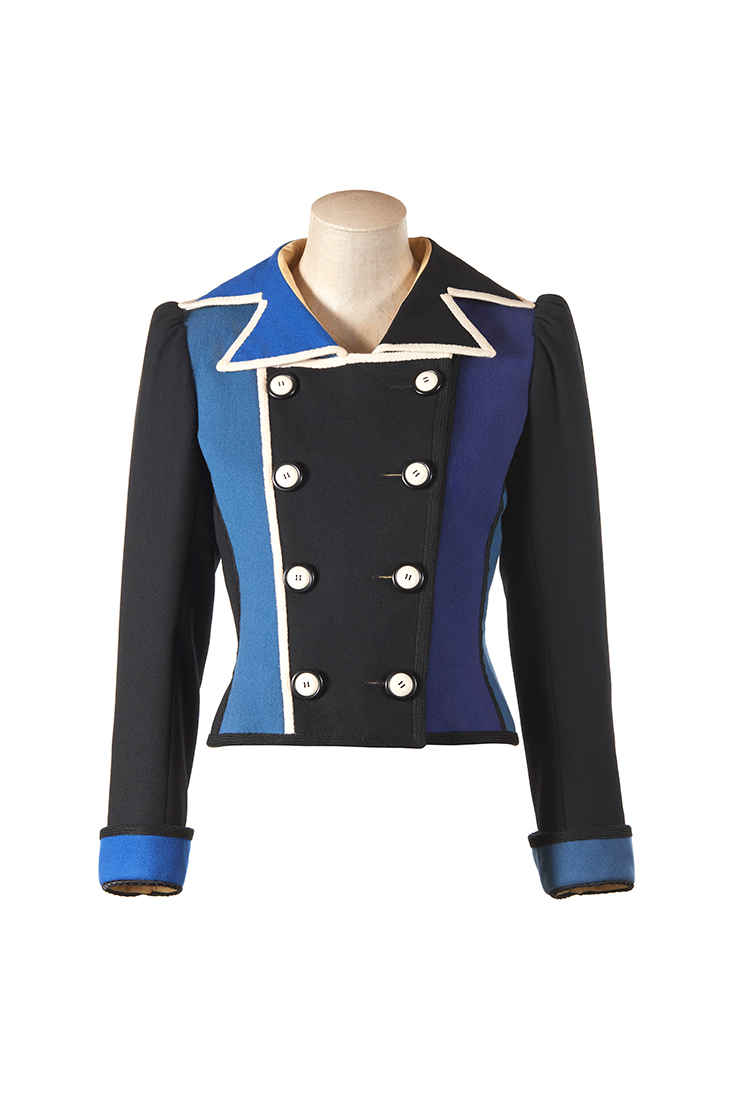
Portrait of Nusch Eluard (1937), Pablo Picasso. Photo: © RMN-Grand Palais (Musée national Picasso-Paris)/Adrien Didierjean; © Succession Picasso – Gestion droits d’auteur

It was the Mondrian dress that gave the designer his first commercial blockbuster in 1965. Saint Laurent obeyed Piet Mondrian’s neo-plastic manifesto to the letter. He chose the A-line shape that André Courrèges had unleashed on the runways a year before, a silhouette as close as one could get to a canvas. But there remained a fundamental contradiction: nothing is more of the real and bodily here-and-now that Mondrian’s art disdained than a dress, no matter how few concessions it makes to hips and boobs. When you think about it, the Mondrian cocktail dress absolutely disembowelled the Dutchman’s principle of pure abstraction. Though maybe the Dutchman, being a lady’s man, wouldn’t have cared. Maybe the art in dress form transmuted to the wearing of it, making the Mondrian dress performative. Or maybe, as Sonia Delaunay sniffed, it was no longer art at all, just ‘a form of society entertainment’, ‘a circus’. Saint Laurent told fashion historians Florence Müller and Farid Chenoune, ‘I realised that we had to stop thinking of a garment as sculpture and, instead, we had to view it as mobile.’ In art terms a neo-plastic dress disturbed the contemplation of universal beauty. In fashion terms these mini-dresses swung.
Sometimes the relationship between YSL and the artist was straightforward theft. Like the peasant blouse he knocked off Matisse’s La Blouse Roumaine (1940). Next to a few strokes of a heart-shaped ovoid with nothing more than a cut-out trapezoid here and a triangle there of decorative motifs to suggest a folk blouse, it is a little deflating to see the literal shirt (attached to skirt) hanging right next to it, beautiful though it is.
Sometimes the museums’ match-ups between Saint Laurent and artist are lazy: take the Pop Art pairing of an Autumn 1966 gown bifurcated by a long dancer’s leg with Gary Hume’s high-kicking, high-gloss The Moon (2009); like Hume, Saint Laurent was a fan of Tom Wesselmann’s Great American Nudes but really, we know, it was all about the matching gams.
There are also some notable absences. The Musée d’Orsay exhibition did not include Saint Laurent’s Van Gogh jackets of sunflowers and irises, whose Lesage beading mimics the gloss and swirl of Van Gogh’s knife-applied paint to perfection. Also a no-show is the hieratic chiffon gown and veil with Claude Lalanne’s moulded copper breasts that Saint Laurent produced for Autumn-Winter 1969.
Breasts were Saint Laurent territory. Knees were where Courrèges planted his flag. Together they vaporised the French Catholic prudishness of the 1950s and early ’60s, but Saint Laurent was the racier one. Nearly two decades before Jean Paul Gaultier’s cone breasts in 1984, popularised by Madonna, came Saint Laurent’s in a totemic black Bambara dress. The dress’s wooden-beaded, rhodoid-disc patterning summons an image of the sculptures of the Malian Bambara people, whose art figured in André Breton’s cabinet of curiosities. While Yves Saint Laurent dipped into an assortment of cultures, including chinoiserie for a collection in 1977, the Centre Pompidou draws a line between the dress of 1967 and bronze raffia coat and the African-influenced avant-gardism of Braque, Derain and Picasso.
Saint Laurent was good at capturing a painter’s intentions with the couturier’s language of fabric, shirring, and draping. On his Domino robe of 1984, Saint Laurent achieved some of the gymnastic thrust and twist of Matisse’s Dance inachevée (1931) with pleats and undulating black bands. Moiré satin adds a sense of movement too with its optical interference effects. Like the fresco now restored in the Musée de l’Art Moderne de la Ville, the robe is in the same wintry palette of blue, pink, grey. Elsewhere, Bonnard and Vuillard are satisfyingly rendered in dappled, colour-saturated, light dresses with puffed-sleeve naivety. He interpreted Sonia Delaunay at the Centre Pompidou in his own way with streamers, starfish shapes, and bits and bobs of coarser, jewel-toned cloth, crudely patchworked on to the skirt. Saint Laurent’s clothing was always refined to a fault. But the almost hippie quilting of his Delaunay dress shows he was aware of the ‘simultaneous’ dresses the artist began making in 1913.
The Garden (c. 1937), Pierre Bonnard. Musée d’Art Moderne, Paris.

Ensemble inspired by Pierre Bonnard (Spring-Summer 2001), Yves Saint Laurent. Musée Yves Saint Laurent, Paris. © Yves Saint Laurent/Nicolas Mathéus
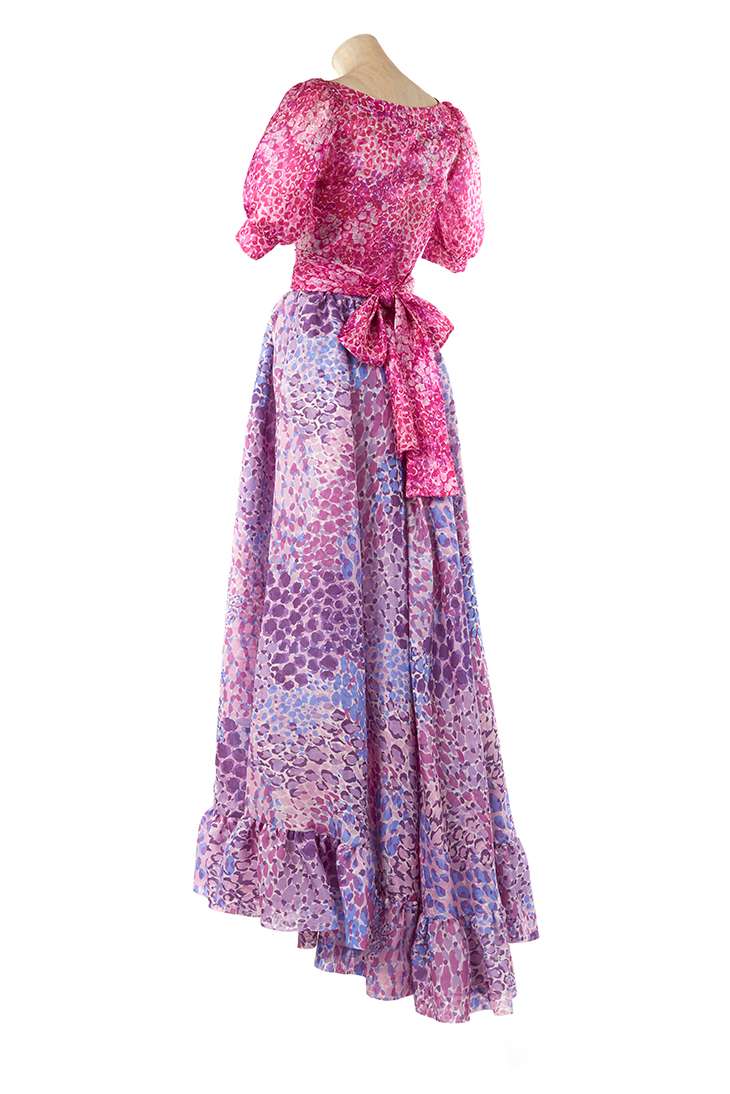
Sometimes Saint Laurent’s dresses surpassed the works that inspired them. The relief ornamentation of a gown surrounded by Fernand Léger’s canvases of cones and spheres and cylinders in the Pompidou is even better than Léger’s compositions, more alive in colour and less calculated in spatial arrangement. To Léger’s Euclidean geometry, Saint Laurent answered with a kinetic scramble of what today looks like street graffiti.
Still, after you trudge through exhibition after exhibition, the dresses become a miasma of exquisiteness, a surfeit of bow-tied waists and oval necklines. Beauty was Saint Laurent’s hang-up, his Achilles heel. He once told his friend the jewellery designer Loulou de la Falaise, ‘Symmetry calms me down, lack of symmetry makes me crazy.’ But early Yves could be jarring, even ugly. Saint Laurent’s couture show of January 1971 was chock-a-block with ’40s wedge heels, big shoulder pads and a nice, short fox coat dyed hideous green. The Centre Pompidou has hung the jacket next to Martial Raysse’s Made in Japan – La Grande Odalisque (1964), a funny, dime-store take on Ingres’ famous painting. Though the gaudy greens make the comparison seem facile at first, there is a call and response between Saint Laurent’s maligned fur and Raysse’s one-eyed send-up. Deliberate ugliness was something Raysse’s kitsch Odalisque and Yves’s jacket had in common. There can be an expansiveness, an astringent liberty in ugliness that beauty is too uptight for. ‘Beauty is bad taste,’ Raysse has said. ‘Bad taste is the dream of beauty too much desired.’
Sketches of headdresses made for the Bal des Têtes (1957), Yves Saint Laurent. Musée Yves Saint Laurent Paris. © Yves Saint Laurent/Nicolas Mathéus

If artist he was, Yves Saint Laurent’s art suffered from his infatuation with gorgeousness. In 1992, he said, ‘I am a failed painter.’ Yet the watercolours in the Musée d’Orsay show, painted by Yves Saint Laurent when he was 21, of frivolous pineapple headdresses and flower-laden follies, had a quick, easy, exultant hand akin to Raoul Dufy’s. After 1992, with Saint Laurent surrounded by Mondrians, Picassos and Matisses in his own home, art no longer went into his work. Gone were the appropriations that make fashion radical, art exciting. All that was left were beautiful clothes.
‘Yves Saint Laurent aux Musées’ is at various venues, Paris, until 16 May.
From the March 2022 issue of Apollo. Preview and subscribe here.

